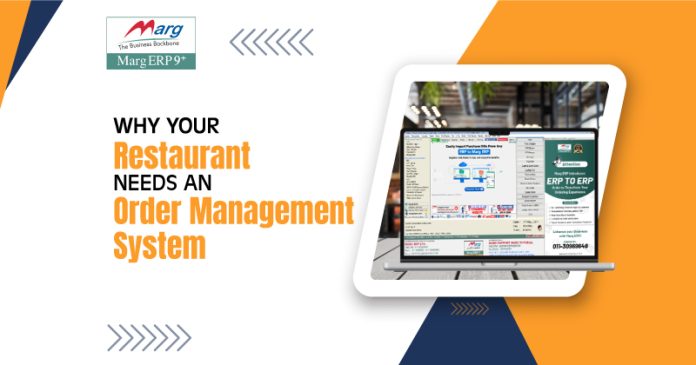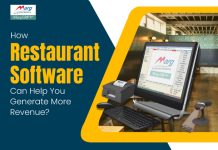The restaurant business has turned quite frantic in terms of competition recently. Since the necessity for operational efficiency is no longer optional, today’s customer expects the restaurant to handle delivering seamless, quick, and precise service. Restaurants now use technology so these processes run as smoothly as possible. An order management system would be one of those key tools to consider, because it really optimizes the way in which an order is processed and brings this together with other parts of the business which are perhaps critical: the inventory management system, and the restaurant management system.
This article will look at why a restaurant needs an order management system, how it complements inventory management, and what its role would play in a bigger restaurant management software package.
Increased Complexity of Restaurant Operations
Restaurant running is definitely not limited to food preparation and serving. Behind a restaurant, there is a closely interrelated system that includes order taking, kitchen coordination, inventory tracking, and other services offered to customers.
All these demand attentions, and hence if something goes wrong, it may prove to be expensive oversight. A small café or a large restaurant chain, the complexity in processing customer orders is proportionate to the size and variety of your restaurant’s menu.
Order management system eliminates the mess around by making sure that the accurate processing of customer orders becomes successful and communicated to the kitchen in real time. This means, therefore, that the staff will have a more focused effort in delivering the great dine-out experience minus the chore of having to track orders manually. Incorrect orders, delays, and missing items are a thing of the past.
What Is Restaurant Order Management System?
The restaurant order management system is an automated system that takes orders, handles them, and fulfils them. It monitors the order from when it is initially taken and taken into processing until it is delivered at the table for consumption.
It attains the accuracy of the orders, keeps following their progress, and gives a pathway for effective delivery to the customers.
Many of the modern order management systems also support multi-platform integration wherein the restaurants can handle dine-in, take-out, delivery, and online orders from a single interface. This results in even superior speed and efficacy in satisfying an order regardless of its source.
Prime Benefits of Restaurant Order Management System
Improved Efficiency and Rapidness
It enables instant order processing through an order management system that can be processed faster and more efficiently than previously. The order is directly channelled to the kitchen the moment a customer place it. The digital tickets are clear and readable, meaning the meals can immediately be prepared by the kitchen staff without waiting for the servers to report the same orders by hand.
This would thus do away with any possibility of delay or misunderstanding or mistake in the order that could have been occasioned by an oral report. Meals are prepared fast so that they may be delivered on time to the customer.
Elimination of Human Error
Since the human factor is introduced in the course of manual ordering, there is a great likelihood that human errors will be made, especially at rush hour time. The papers written on some of the orders will not be legible, and this might pose confusion to the kitchen staff who result in wrong or missed meals. An OMS does not permit this since it presents crystal-clear, clear order details that result in minimal errors.
Integration to POS systems
Many order management systems are fully integrated with the restaurant POS. That ensures you would be able to streamline billing, accounting, and financial reporting. All your order-related data are automatically captured within the POS. This makes unnecessary manual reentry of data redundant. In addition, the accuracy of financial records would be much higher.
Real-time tracking of orders
That real-time order tracking is that very key for restaurants offering delivery or takeout, because it cannot be overemphasized. The consumers would use an internet portal or a mobile application to check on the status of their orders, thus enhancement of customers’ satisfaction as they keep abreast with delivery periods.
Data Collection and Analytics
This means that an OMS generates rich data, including information on peak ordering times, thus helping restaurants ascertain the most popular dishes. This will provide answers to many of their most common questions that will go a long way in enabling restaurants to make data-driven decisions regarding their menu, staffing, and promotions.
Restaurant Inventory Management: The Heart of Every Business
Effective management of inventory is key to a successful restaurant business. Being out of key ingredients during service will disappoint customers and deny revenue. Overstocking will attract wastage, which is a dampener on profit levels. The right restaurant order management system can be a good integration with other inventory management systems that help solve these issues.
a. Real-time inventory tracking
This system can be linked to the inventory management system, making it possible for real-time stock levels updates. Whenever an order is confirmed, the system will automatically adjust the count of the inventory, keeping the restaurants always up to date on their stock levels.
b. Overstocking and Understocking Prevention
An OMS can help restaurants not stock too much and at the same time, not stock too little; it keeps good records. A short supply of a specific ingredient will be indicated ahead of time by the system, and in due course, staff can order again before they have run out in the restaurant. On the other side of things, it will also prevent overordering because it can clearly indicate what is actually on hand.
c. Waste Minimization
Effective inventory management, in combination with an order system, does not allow food to waste because whatever is used of any ingredient will be used without waste. The order data can be referred to historically to help managers better anticipate demand and subsequently make orders according to actual need instead of guesses.
Streamlining Restaurant Operations with Restaurant Management Software
A full restaurant management software system may include both an order management system and an inventory management system, among other critical tools including scheduling employees, accounting, CRM, and reporting. Such systems will integrate to make restaurant operations run more smoothly and give the managers a comprehensive view of the health of their business.
a. Control System: Centralized Control
Restaurant management software tends to bring all the restaurant’s activities together at one spot, so that one location can be easily operated without much interference from the top location, hence becoming easy to manage multiple locations, reporting standardized and workflows standardized and consistent. Chain restaurants can enjoy centralized control at all branches keeping the brand experience intact.
b. Better Customer Experience
The restaurant management software will be able to capture customer data, order history, and preferences and personalize the experience at the time of dining. For example, the system would be able to track regular customers’ favourite dishes or seating preferences and meet the objective of a ‘memorable’ experience.
c. Better Communication
This is a core feature of effective front-of-house and back-of-house communication, which means smooth operation of restaurant chains. Restaurant management software supports this with real-time communication tools to help teams work better. Order preparation would be faster, mistakes reduced, and the general experience of customers enhanced.
d. Mobile Access
Modern restaurant management software is largely cloud-based and accessible through mobile devices, too. That way, managers and staff can check in anytime for better flexibility while managing their operations. Whether you check on the inventory level, track the efficiency of schedules, or get real-time reports of orders, mobile access is sure to keep you in control.
Conclusion
What most restaurants in an industry based on efficiency, speed, and customer satisfaction need is a restaurant order management system. Automating and optimizing the ordering process; reduces errors; integrating it with other necessary systems such as inventory management can significantly improve the operational efficiency of your restaurant.
Today, embracing technology like an order management system becomes the necessity of staying on the relevance map rather than being a competitive advantage while remaining profitable in the restaurant industry.
Read More:-
- The Power of POS Software: Revolutionizing Retail in AssamHeadline: Revolutionizing Retail with POS Software in Assam Point of Sale (POS) software is transforming the retail landscape in Assam, one of the seven sisters of Northeast India.… Read more: The Power of POS Software: Revolutionizing Retail in Assam
- The Benefits and Challenges of Implementing POS Software in BiharPOS Software in Bihar: An Overview Point of Sale (POS) software has become an essential tool for businesses of all sizes, including those in Bihar. With the increasing… Read more: The Benefits and Challenges of Implementing POS Software in Bihar















